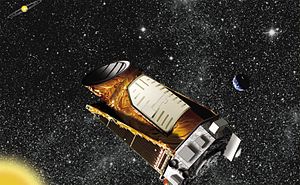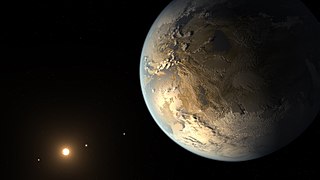
These are lists of planets. A planet is a large, rounded astronomical body that is neither a star nor its remnant. The best available theory of planet formation is the nebular hypothesis, which posits that an interstellar cloud collapses out of a nebula to create a young protostar orbited by a protoplanetary disk. There are eight planets within the Solar System; planets outside of the solar system are also known as exoplanets.
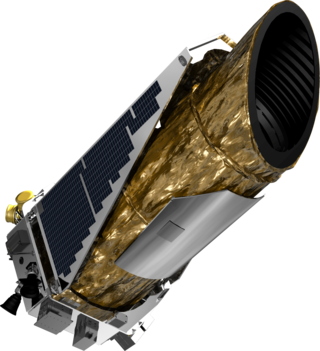
The Kepler space telescope is a defunct space telescope launched by NASA in 2009 to discover Earth-sized planets orbiting other stars. Named after astronomer Johannes Kepler, the spacecraft was launched into an Earth-trailing heliocentric orbit. The principal investigator was William J. Borucki. After nine and a half years of operation, the telescope's reaction control system fuel was depleted, and NASA announced its retirement on October 30, 2018.

Geoffrey William Marcy is an American astronomer. He was an early influence in the field of exoplanet detection, discovery, and characterization. Marcy was a professor of astronomy at the University of California, Berkeley, and an adjunct professor of physics and astronomy at San Francisco State University. Marcy and his research teams discovered many extrasolar planets, including 70 out of the first 100 known exoplanets and also the first planetary system around a Sun-like star, Upsilon Andromedae. Marcy was a co-investigator on the NASA Kepler space telescope mission. His collaborators have included R. Paul Butler, Debra Fischer and Steven S. Vogt, Jason Wright, Andrew Howard, Katie Peek, John Johnson, Erik Petigura, Lauren Weiss, Lea Hirsch and the Kepler Science Team. Following an investigation for sexual harassment in 2015, Marcy resigned his position at the University of California, Berkeley.
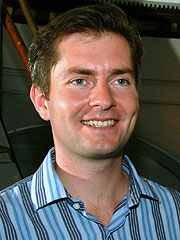
David Brian Charbonneau is a professor of Astronomy at Harvard University. His research focuses on the development of novel techniques for the detection and characterization of exoplanets orbiting nearby, Sun-like stars.
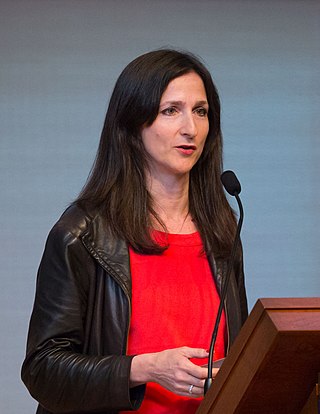
Sara Seager is a Canadian-American astronomer and planetary scientist. She is a professor at the Massachusetts Institute of Technology and is known for her work on extrasolar planets and their atmospheres. She is the author of two textbooks on these topics, and has been recognized for her research by Popular Science, Discover Magazine, Nature, and TIME Magazine. Seager was awarded a MacArthur Fellowship in 2013 citing her theoretical work on detecting chemical signatures on exoplanet atmospheres and developing low-cost space observatories to observe planetary transits.
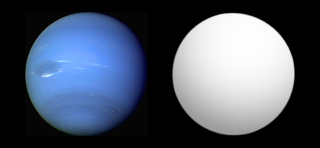
Kepler-4b, initially known as KOI 7.01, is an extrasolar planet first detected as a transit by the Kepler spacecraft. Its radius and mass are similar to that of Neptune; however, due to its proximity to its host star, it is substantially hotter than any planet in the Solar System. The planet's discovery was announced on January 4, 2010, in Washington, D.C., along with four other planets that were initially detected by the Kepler spacecraft and subsequently confirmed by telescopes at the W.M. Keck Observatory.

Kepler-6b is an extrasolar planet in the orbit of the unusually metal-rich Kepler-6, a star in the field of view of the NASA-operated Kepler spacecraft, which searches for planets that cross directly in front of, or transit, their host stars. It was the third planet to be discovered by Kepler. Kepler-6 orbits its host star every three days from a distance of .046 AU. Its proximity to Kepler-6 inflated the planet, about two-thirds the mass of Jupiter, to slightly larger than Jupiter's size and greatly heated its atmosphere.
Kepler-4 is a sunlike star located about 1626 light-years away in the constellation Draco. It is in the field of view of the Kepler Mission, a NASA operation purposed with finding Earth-like planets. Kepler-4b, a Neptune-sized planet that orbits extremely close to its star, was discovered in its orbit and made public by the Kepler team on January 4, 2010. Kepler-4b was the first discovery by the Kepler satellite, and its confirmation helped to demonstrate the spacecraft's effectiveness.

David Morrison is an American astronomer, a senior scientist at the Solar System Exploration Research Virtual Institute, at NASA Ames Research Center in Mountain View, California. Morrison is the former director of the Carl Sagan Center for Study of Life in the Universe at the SETI Institute and of the NASA Lunar Science Institute. He is the past Director of Space at NASA Ames. Morrison is credited as a founder of the multi-disciplinary field of astrobiology. Morrison is best known for his work in risk assessment of near Earth objects such as asteroids and comets. Asteroid 2410 Morrison was named in his honor. Morrison is also known for his "Ask an Astrobiologist" series on NASA's website where he provides answers to questions submitted by the public. He has published 12 books and over 150 papers primarily on planetary science, astrobiology and near Earth objects.
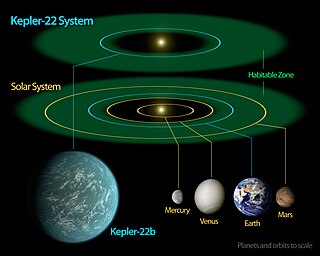
Kepler-22b is an exoplanet orbiting within the habitable zone of the Sun-like star Kepler-22. It is located about 640 light-years from Earth in the constellation of Cygnus. It was discovered by NASA's Kepler Space Telescope in December 2011 and was the first known transiting planet to orbit within the habitable zone of a Sun-like star, where liquid water could exist on the planet's surface. Kepler-22 is too dim to be seen with the naked eye.

Kepler-62 is a K-type main sequence star cooler and smaller than the Sun, located roughly 980 light-years from Earth in the constellation Lyra. It resides within the field of vision of the Kepler spacecraft, the satellite that NASA's Kepler Mission used to detect planets that may be transiting their stars. On April 18, 2013, it was announced that the star has five planets, two of which, Kepler-62e and Kepler-62f are within the star's habitable zone. The outermost, Kepler-62f, is likely a rocky planet.

Kepler-62e is a super-Earth exoplanet discovered orbiting within the habitable zone of Kepler-62, the second outermost of five such planets discovered by NASA's Kepler spacecraft. Kepler-62e is located about 990 light-years from Earth in the constellation of Lyra. The exoplanet was found using the transit method, in which the dimming effect that a planet causes as it crosses in front of its star is measured. Kepler-62e may be a terrestrial or ocean-covered planet; it lies in the inner part of its host star's habitable zone.

Kepler-62f is a super-Earth exoplanet orbiting within the habitable zone of the star Kepler-62, the outermost of five such planets discovered around the star by NASA's Kepler space telescope. It is located about 980 light-years from Earth in the constellation of Lyra.

Natalie M. Batalha is professor of Astronomy and Astrophysics at UC Santa Cruz. Previously she was a research astronomer in the Space Sciences Division of NASA Ames Research Center and held the position of Science Team Lead, Mission Scientist, and Project Scientist on the Kepler Mission, the first mission capable of finding Earth-size planets around other stars. Before moving to NASA, Batalha was a Professor of Physics and Astronomy at San Jose State University.

Kepler-438b is a confirmed near-Earth-sized exoplanet. It is likely rocky. It orbits on the inner edge of the habitable zone of a red dwarf, Kepler-438, about 472.9 light-years from Earth in the constellation Lyra. It receives 1.4 times our solar flux. The planet was discovered by NASA's Kepler spacecraft using the transit method, in which the dimming effect that a planet causes as it crosses in front of its star is measured. NASA announced the confirmation of the exoplanet on 6 January 2015.

The Nexus for Exoplanet System Science (NExSS) initiative is a National Aeronautics and Space Administration (NASA) virtual institute designed to foster interdisciplinary collaboration in the search for life on exoplanets. Led by the Ames Research Center, the NASA Exoplanet Science Institute, and the Goddard Institute for Space Studies, NExSS will help organize the search for life on exoplanets from participating research teams and acquire new knowledge about exoplanets and extrasolar planetary systems.

Elisa Victoria Quintana is a scientist working in the field of astronomy and planetary science at NASA Goddard Space Flight Center. Her research focuses the detection and characterization of exoplanets in addition to studying how they form. She is best known for the detection of Kepler 186f, the first Earth-sized planet found in the habitable zone of a star other than the Sun.

Jessie Christiansen is an Australian astrophysicist who is the Chief Scientist of the NASA Exoplanet Science Institute at the California Institute of Technology (Caltech). She won the 2018 NASA Exceptional Engineering Achievement Medal for her work on the Kepler planet sample.
Kepler-1658b is a hot Jupiter, a type of gas giant exoplanet, that orbits an F-type star called Kepler 1658, located about 2629 light-years away from the Solar System. It is the first planet identified by the Kepler space telescope after its launch in 2009, but later ruled out as false alarm since its transit could not be confirmed. A study published in 2019 established it as a planet, describing it as "the closest known planet in terms of orbital period to an evolved star." Analysis of the Transiting Exoplanet Survey Satellite (TESS) data in 2022 showed that it is gradually spiraling into its star.

